Connecting Heritage
Krakow's Old Town
My time in Krakow, Poland has been a favorite thus far. Krakow used to be the Capital of Poland, but on a walking tour, I learned that this is not so because the king set fire to Wawel Royal Castly (in Krakow) and moved to Warsaw during the repairs. When the repairs were ready the king found it geographically easier to stay in Warsaw with it being closer to the border means it was easier to travel to border countries such as Lithuania.
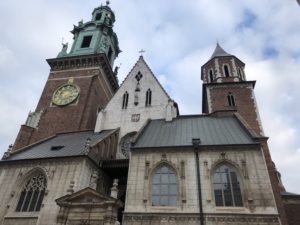
Another interesting fact about this Castle is its juxtaposition of different styles. Reflected in the image above is Renaissance (white limestone) with a mix of Gothic architecture reflected by the darker red bricks. This mix of architecture was because of the different influences of each King in Krakow at the time these pieces were commissioned. The Castle sits atop a hill and is surrounded by water which makes it an excellent fort and nearly impossible to penetrate. During WWII, the German government overtook the castle and used it as a fort because of the aforementioned.
The old town of Krakow used to be surrounded by a large brick wall, but it was torn down around the time it needed to be renovated. Inside Krakow’s Old Town, which is a UNESCO World Heritage Site is the main square.
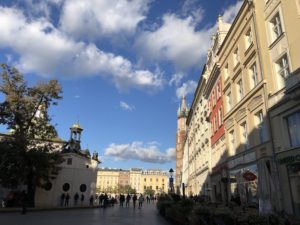
Krakow’s main square is large and much like Vienna’s Schönbrunn Palace, is equally symmetrical. Krakow’s Old Town is surrounded by 3 blocks of buildings set in place at 90 degrees. Each of the buildings is 200 meters from the center of the Old Town.
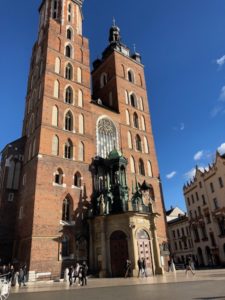
The Church is the only building that does not lie symmetrically with the others and this is so that the altar faces the Eastern direction. This is in line with certain beliefs of the church.
Auschwitz-Birkenau
Apart from exploring the Old Town of Krakow, I visited Auschwitz Concentration Camp which is in the town ofOświęcim, Poland. Oświęcim is about 90 minutes outside of Krakow and the camp is so large that you could easily spend 12-14 hours. There are two camps, Auschwitz I and Auschwitz II-Birkenau. I learned a lot and it was with a heavy heart that I am grateful for the time spent at each camp.
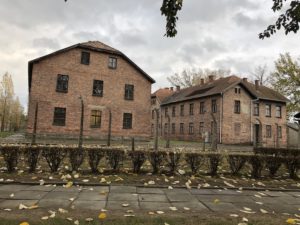
The camp serves as a memorial and museum to all those who lost their lives from 1940-1945 during the German occupation. The camp itself welcomes over 8,000 persons a day and you must be bussed from one camp to the other with Auschwitz II-Birkenau being much, much larger than the first. The wooden buildings at Auschwitz II-Birkenau were originally designed to house 51 horses and instead fit up to 1,000 persons each at one time.
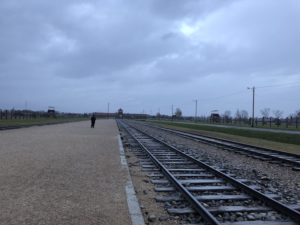
The above is an image of the infamous unloading dock where so many millions were organized and sent directly to the chambers so that SS Soldiers (Nazis) could ensue mass genocide. For me, it was important to visit this place as a reminder to always be kind. It wasn’t that long ago that these war crimes took place.
Auschwitz-Birkenau, the Nazi German concentration and extermination camp, was the largest camp that the Germans established during the Second World War. It is the only death camp on the UNESCO World Heritage List.
Today I traveled to the now capital of Poland, Warsaw.
I hope you’ll join me tomorrow as we connect heritage!
Bianca


